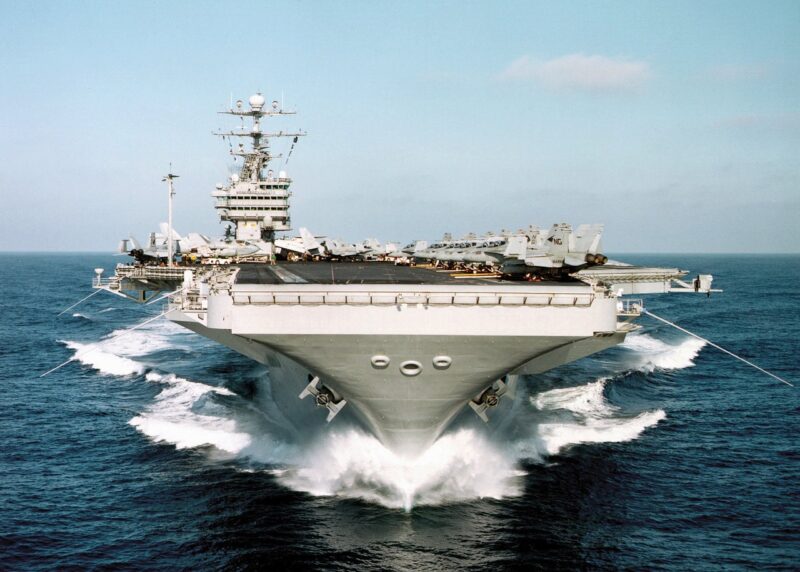The Role of Aircraft Carriers in Modern Warfare and Their Strategic Importance
November 12, 2024

Aircraft carriers have become the centerpiece of naval power projection in modern warfare. Since the early 20th century, they have played a crucial role in naval conflicts and are seen as floating bases that extend a nation’s military reach across oceans. With advancements in technology and changes in military strategy, the role of aircraft carriers has evolved, making them more significant than ever in contemporary combat scenarios. This article delves into the history, evolution, and strategic importance of aircraft carriers in modern warfare.
1. Historical Context: The Birth of the Aircraft Carrier
The concept of the aircraft carrier emerged during the early 20th century as navies began to realize the potential of aircraft in naval warfare. The first aircraft carriers were converted vessels that launched planes for reconnaissance and attacks. The advent of World War II marked a significant turning point, as aircraft carriers were used effectively during key battles such as the Battle of Midway.
The shift from battleships to aircraft carriers as the dominant naval asset was evident as carriers proved capable of delivering powerful airstrikes against enemy fleets and land targets. The versatility of aircraft carriers in projecting power made them vital assets for naval forces around the world.
2. The Design and Functionality of Modern Aircraft Carriers
Modern aircraft carriers are engineering marvels, with designs adapted to accommodate advancements in naval aviation. The key features that define contemporary aircraft carriers include:
- Flight Deck: The flight deck serves as the main operational area for aircraft takeoffs and landings. Modern carriers utilize catapults for launching heavier aircraft and arrestor wires for efficient recovery.
- Hangar Space: Carriers possess substantial hangar space to store and maintain a diverse array of aircraft, including fighters, bombers, and support planes.
- Command and Control Centers: Equipped with advanced radar and communication systems, carriers serve as central hubs for coordinating operations, gathering intelligence, and managing airspace control.
These features allow modern aircraft carriers to act as mobile airbases that can operate in international waters, providing the capability to strike with precision when and where required.
3. Strategic Importance in Modern Warfare
The strategic importance of aircraft carriers in today’s military landscape can be highlighted through several key roles they play:
- Power Projection: Aircraft carriers enable nations to project military power without the need for permanent bases in foreign territories. This is especially critical in regions lacking robust infrastructure or where political considerations impede base establishment.
- Rapid Response Capabilities: Carriers can be deployed quickly to hot spots around the world, allowing for immediate military response to crises, humanitarian emergencies, and conflicts.
- Air Supremacy: With a full complement of aircraft, carriers can achieve air superiority over conflict zones, supporting ground operations and protecting forces from aerial threats.
- Deterrence: The mere presence of an aircraft carrier in a region can deter adversaries from engaging in hostile actions, as it symbolizes a nation’s commitment to defending its interests and allies.
In recent conflicts, such as the Syrian Civil War and in operations against ISIS, carriers have demonstrated their ability to launch precision airstrikes while allowing for a sustained presence in volatile environments.
4. The Aircraft Carrier’s Evolving Role in New Threat Landscapes
As warfare evolves, aircraft carriers face new challenges, including emerging technologies and forms of warfare:
- Anti-Access/Area Denial (A2/AD) Strategies: Nations like China and Russia have developed sophisticated missile systems capable of targeting carriers from great distances, challenging their ability to operate freely in contested areas. This requires carriers to adapt by utilizing advanced countermeasures and enhancing their escort capabilities.
- Cyber Warfare: Modern conflict involves cyber capabilities, where carriers’ systems must be defended against cyberattacks that could disrupt operations or compromise sensitive data.
- Integration with Amphibious Forces: Aircraft carriers are increasingly integrated with amphibious assault ships, enabling coordinated operations that leverage air and naval power to support ground invasions and special operations.
The evolution of warfare practices necessitates that carriers deploy innovative tactics and remain vigilant against an expanding array of threats.
5. Future Outlook: The Next Generation of Aircraft Carriers
Looking ahead, the next generation of aircraft carriers is set to incorporate advanced technologies such as:
- Unmanned Aerial Vehicles (UAVs): The rise of drones will change naval operations, allowing carriers to deploy UAVs for surveillance, reconnaissance, and even offensive strike missions, extending the range and effectiveness of carrier air wings.
- Enhanced STEALTH Capabilities: Next-generation carriers will integrate stealth technologies, making them harder to detect and target by enemy radar systems, thus enhancing survivability.
- Increased Connectivity and Interoperability: Future carriers are expected to feature enhanced communication systems, enabling better integration with other branches of military forces and allied nations during joint operations.
With these advancements, aircraft carriers are likely to maintain their relevance as powerful symbols of naval dominance and strategic assets in global conflicts.
Conclusion: The Resilient Future of Aircraft Carriers
In conclusion, aircraft carriers retain their significance in modern warfare, acting as crucial instruments of power projection and military capability. As threats evolve, so too must the role of these floating fortresses. The ability of carriers to adapt to new technologies and strategic paradigms will determine their survival and influence in the decades to come. Ultimately, they will continue to serve as indispensable tools in maintaining a nation’s global military presence and readiness to respond to emerging threats worldwide.







